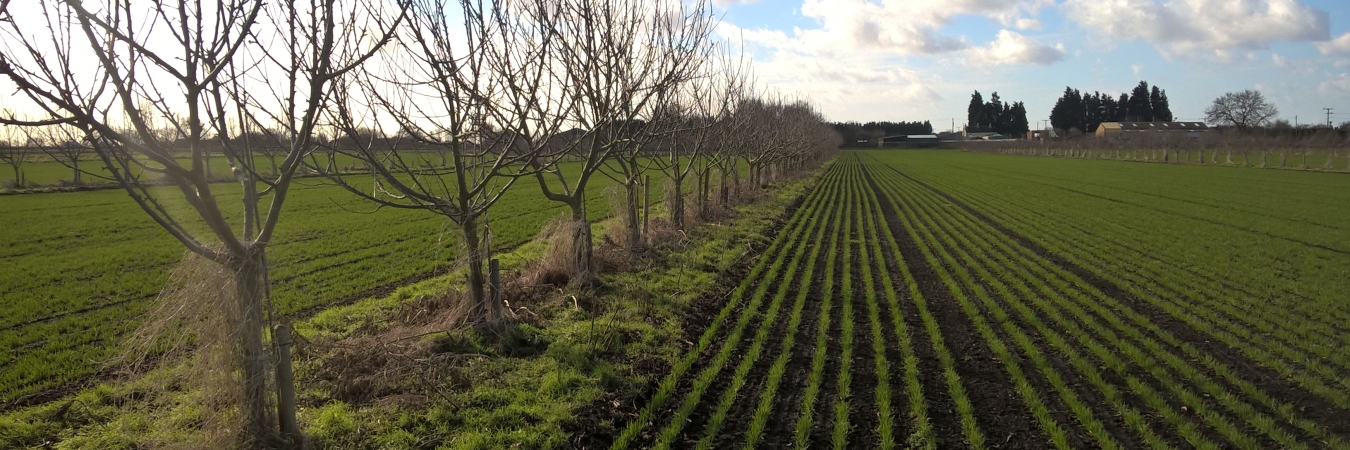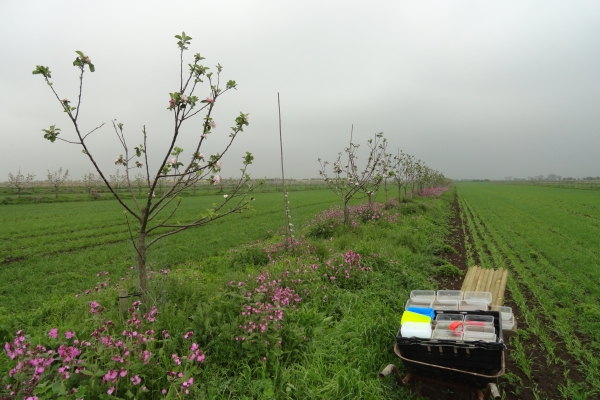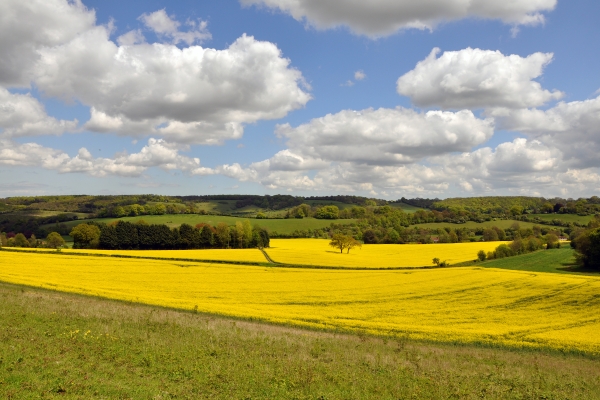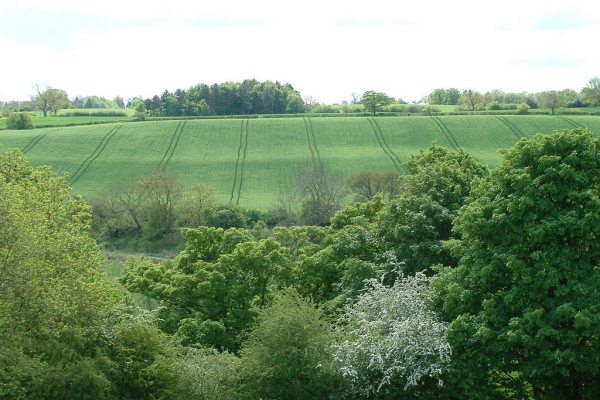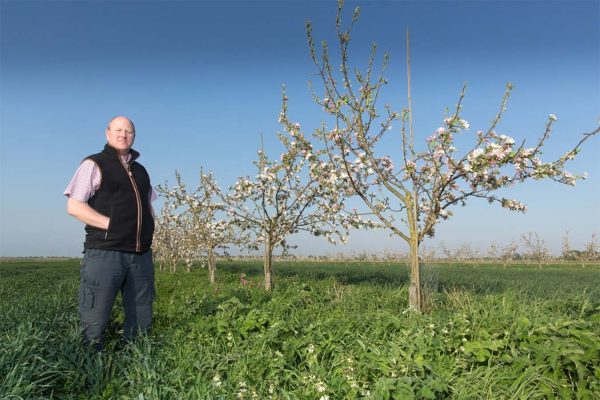Could farming with trees help to control pests and boost pollinators?
Can farmers control pests without pesticides, and pollinate their crops without honey bees? All while making money out of it? Agroforestry, which is basically farming with trees, could be one such win-win solution.
In recent years, pioneering farmers have begun planting trees, often for apple or other fruits, in rows within their arable fields. The tree rows are spaced 24m apart so that machinery can access the arable alleys in between. This type of agroforestry, often called ‘silvoarable,’ can diversify economic income, protect the soil, and boost biodiversity. Could this setup be a magic bullet of profitability, economic resilience, sustainability and environmental protection?
I expect many readers will be all too familiar with the ecological threats facing conventional agriculture: for example pesticide resistance, tighter pesticide legislation, consumer demands for healthy and eco-friendly food, and honey bee shortages or colony collapses. All of these mean that we need to find more sustainable ways to control pests and pollinate our crops, such as encouraging beneficial insects onto farms. I am interested in whether agroforestry could achieve this, and whether there are any drawbacks, for example do the tree rows just become a source of weeds and pests?
There is some previous evidence that agroforestry suppresses most pests and boosts their predators and pollinators, as I discuss in a recent research report for the Woodland Trust. However, this evidence is patchy and incomplete, and we don’t really understand what it all means for pest control and pollination.
So to investigate this further, as part of a PhD project in partnership with the Organic Research Centre and the Woodland Trust, we are collecting data from three agroforestry farms in Cambridgeshire and Nottinghamshire over three successive years, starting last year. Our first year simply aimed to collect data on insect biodiversity; are any insects more common in agroforestry fields than treeless arable fields, or vice versa?

The results have been fascinating, but sometimes puzzling. For example, most plant-eating insects were less numerous in the agroforestry than arable, which is promising, but slugs were more abundant in agroforestry, and may be using the tree rows as a refuge from cultivation. Perhaps surprisingly, we found less weed cover in agroforestry than arable at two sites, but it was quite a bit higher in agroforestry at the other site. Spiders, harvestmen and parasitoids, which all help to control pests, were more abundant in the agroforestry than the pure-arable field at all three sites. But ground beetles, another group of beneficial predators, showed very contrasting effects between sites, being either more abundant or less abundant in agroforestry than arable. As for the wild pollinators, that is bees and hoverflies, we found more in the agroforestry than arable overall. So the initial results are mostly promising for agroforestry, but as always in ecology, nothing is simple!

One of the most interesting aspects in all of this is the variation between sites. In particular, we found the strongest benefit of agroforestry, in terms of boosting helpful insects and suppressing the pests, at the farm in the most intensive arable landscape. This makes sense when you think about it; adding diversity to a simple landscape could be expected to have a bigger effect than adding diversity within a landscape that is already quite diverse. We also found some far-reaching effects of boundary hedgerows on insect numbers in the arable field, which supports this theory.
We have almost another two years to run under the project, and things will only get more interesting! As well as continuing to monitor insects, this year we are experimenting with trying to measure pest control and pollination, so that we can estimate the economic implications. This includes deploying aphid-infested potted plants to measure predation and parasitism, throwing maggots and weed seeds into the fields to measure predation rates, and excluding pollinators from apple flowers to see how much they contribute to yield. We’re also interested in looking at whether the apparent increase in slugs in agroforestry actually causes crop damage, and if so how much. Further down the line, we are considering plans to trial different understorey managements in 2020; for example, how does mowing the tree understorey affect pests, predators and pollinators, compared to having a tall flowery understorey?
Tom Staton writes of himself “My background is in ecology and I’ve always been fascinated by the living world, and particularly the challenge of how we can find ways to coexist with nature in an ever expanding and developing society. Following a degree in Biology and a Masters in Biological Recording and Ecological Monitoring, I worked as an ecological consultant for several years, before starting my PhD at the University of Reading. I’m now in my second year of the PhD and am enjoying discovering how agroforestry could be a profitable solution to the restoration of biodiversity on farmland.”
Header image shows a silvoarable agroforestry field in winter (apple trees intercropped with oats at Whitehall Farm. The vegetated tree rows could provide a good overwintering habitat for insects).
